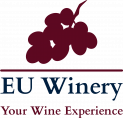Transform Your Drinking Experience
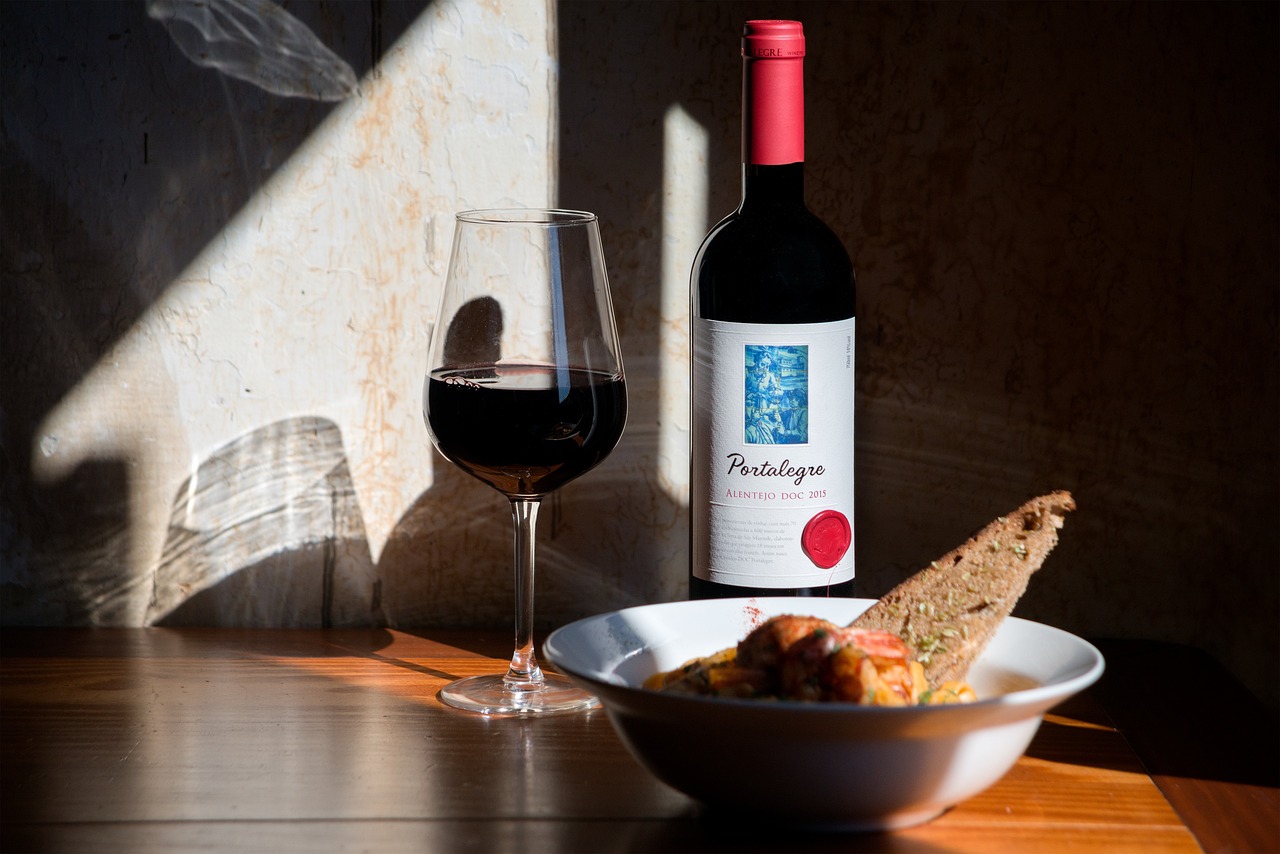
Not everyone chooses to embark on the journey of becoming wine-savvy, but for those who do, it proves to be the ultimate way to elevate social experiences and refine one’s palate. Beyond the immediate advantages, such as increased confidence in wine selection and the ability to discern quality differences, there are profound side benefits. The newfound ability to identify and appreciate wine quality might revolutionize your perspective, potentially altering the way you perceive grocery store wines. If you’d rather preserve the bliss of ignorance, now might be the opportune moment to cease reading.
Wine is a complex and diverse beverage that has been enjoyed for thousands of years. Understanding wine involves appreciating its history, production process, varieties, and tasting characteristics. This guide provides a basic introduction to wine knowledge, including its types, regions, and key concepts.
About European Winemaking
History
European winemaking boasts a rich history spanning thousands of years, with several significant milestones shaping its development. These historical milestones collectively reflect the evolution and resilience of European winemaking, shaping its identity as a cornerstone of cultural, economic, and culinary heritage.
Timeline
Early Viticulture
The cultivation of grapevines for winemaking dates back to ancient times in regions such as Mesopotamia, Egypt, and the Near East. Phoenician traders spread viticulture to regions like Greece and Italy around 1200 BCE.
Ancient Greece and Rome
Wine played a central role in the cultures of ancient Greece and Rome. The Greeks worshipped Dionysus, the god of wine, and established vineyards in regions like Attica and Thessaly. In Rome, winemaking flourished, and techniques for grape cultivation and fermentation were refined. Roman expansion spread viticulture throughout the empire, including Gaul (modern-day France), Spain, and Germany.
Monastic Influence
During the Middle Ages, monasteries played a pivotal role in preserving and advancing winemaking knowledge. Monks meticulously tended vineyards and improved winemaking techniques, contributing to the quality and diversity of European wines. Monastic orders such as the Benedictines and Cistercians were particularly influential in regions like Burgundy and Champagne.
Feudalism and Wine Estates
In feudal Europe, the feudal system facilitated the establishment of large wine estates owned by nobility and clergy. These estates, often managed by tenant farmers, produced wine primarily for local consumption. The feudal system also influenced landownership patterns, vineyard management practices, and wine trade regulations.
Wine Trade and Exploration
The Age of Exploration in the 15th and 16th centuries opened up new trade routes and introduced European wines to global markets. Wine became a valuable commodity in international trade, with regions like Bordeaux, Porto, and Jerez exporting their wines to distant markets.
Classification Systems
In the 18th and 19th centuries, European wine regions began implementing classification systems to categorize vineyards and wines based on quality and reputation. These systems, such as the Bordeaux Classification of 1855 and the Chianti Classico designation in Italy, provided consumers with guidance and assurance of wine quality.
Phylloxera Crisis
In the late 19th century, European vineyards were devastated by the phylloxera epidemic, a pest that attacked grapevines’ roots. This crisis led to widespread vineyard replanting using American rootstocks resistant to phylloxera, fundamentally altering European viticulture practices.
Modernization and Globalization
The 20th and 21st centuries witnessed significant advancements in winemaking technology, viticultural practices, and marketing strategies. European wine regions adapted to changing consumer preferences and international competition while preserving their unique terroirs and cultural heritage.
Joven (Young):
- Aging: Minimal aging, if any, often less than a year.
- Characteristics: Fresh, fruity, and typically consumed soon after bottling.
- Use: Usually intended for immediate consumption.
Crianza:
- Aging: At least 2 years, with a minimum of 1 year in oak barrels.
- Characteristics: Balanced with fruit and oak flavors, suitable for aging a bit longer.
- Use: Can be consumed upon release but also benefits from additional bottle aging.
Reserva:
- Aging: At least 3 years, with a minimum of 1 year in oak barrels and the rest in the bottle.
- Characteristics: Complex flavors with noticeable oak influence, suitable for further aging.
- Use: Can be aged further to develop more nuanced flavors.
Gran Reserva:
- Aging: At least 5 years, with a minimum of 2 years in oak barrels and the rest in the bottle.
- Characteristics: Highly complex, with deep, well-integrated flavors from extended aging.
- Use: These wines are ready to drink upon release but can be aged for many more years.
Rioja wine classification is based on the aging process and duration. This system helps consumers understand the quality and characteristics of the wine. These classifications provide guidance on the expected taste profile and optimal drinking times for Rioja wines.
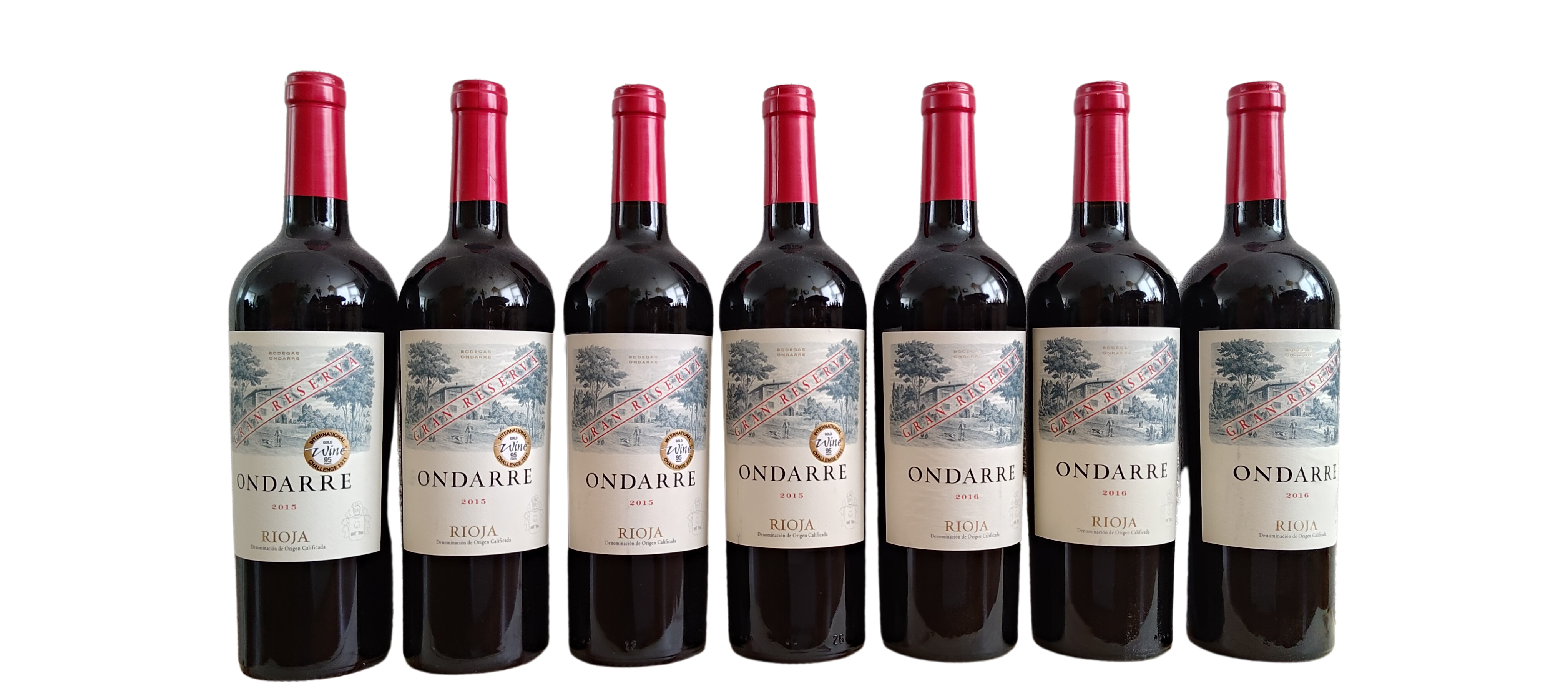
Italian Wine Classification
Italian wine classification is a comprehensive system that helps to ensure the quality and authenticity of wines from various regions of Italy. Here are the main categories of Italian wine classification:
VdT, IGT, DOC, DOCG
These classifications help consumers identify the quality and origin of Italian wines, ensuring they meet specific standards related to production methods, grape varieties, and aging processes.
Vino da Tavola (VdT):
- Meaning: “Table Wine.”
- Characteristics: The most basic category, typically with few regulations regarding grape varieties or production methods.
- Label: Often does not include geographic origin, vintage, or grape variety.
Indicazione Geografica Tipica (IGT):
- Meaning: “Indication of Typical Geographic Origin.”
- Characteristics: Wines from specific regions that allow for more flexibility in grape varieties and production methods compared to DOC/DOCG.
- Label: Includes the geographic area and often the vintage and grape variety.
- Examples: Toscana IGT, Veneto IGT.
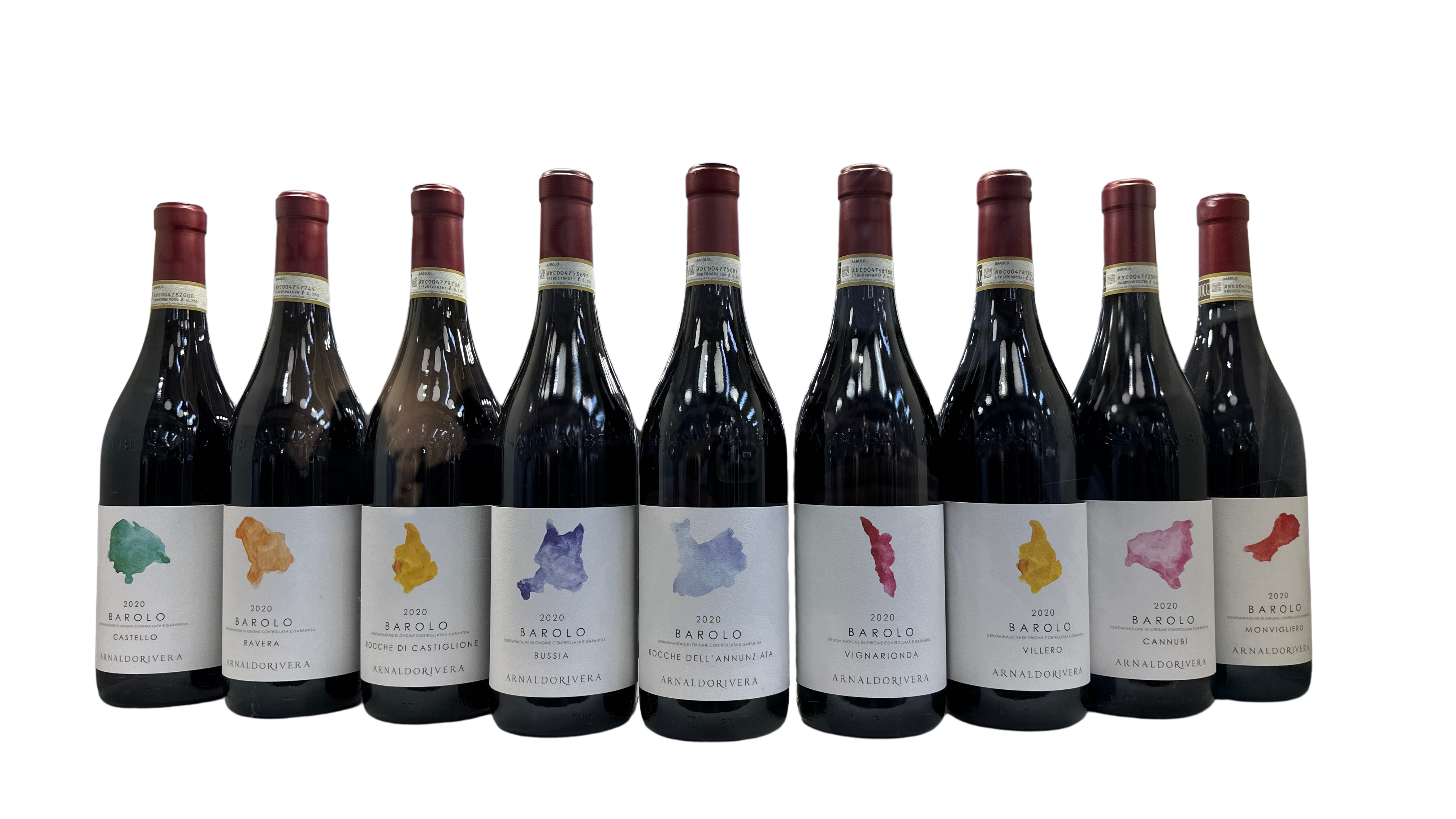
Denominazione di Origine Controllata (DOC):
- Meaning: “Controlled Designation of Origin.”
- Characteristics: Wines produced in specific geographic areas with defined grape varieties and production methods.
- Label: Includes the specific region and may include the grape variety and vintage.
- Examples: Chianti DOC, Barolo DOC.
Denominazione di Origine Controllata e Garantita (DOCG):
- Meaning: “Controlled and Guaranteed Designation of Origin.”
- Characteristics: The highest quality classification, with stringent production standards, including lower yields, stricter regulations on grape varieties, and aging requirements.
- Label: Includes a government seal of authenticity, the specific region, and often the vintage and grape variety.
- Examples: Brunello di Montalcino DOCG, Amarone della Valpolicella DOCG.
Additional Labels and Terms
Classico: Indicates the traditional, historic area of a wine region, often considered to produce higher quality wines.
Riserva: Indicates wines that have been aged longer than the standard requirements for their classification (typically applies to DOC and DOCG wines).
Superiore: Indicates wines with higher alcohol content and often stricter production standards.
French Wine Classification
French wine classification is a system that designates the quality and origin of wines from various regions in France. The classifications are based on geographical origin, grape varieties, production methods, and other regulations to ensure quality and authenticity. Here are the main categories:
Vin de France, IGP, AOC, AOP
These classifications help ensure the quality and authenticity of French wines, providing consumers with a reliable guide to the wine’s origin, production methods, and expected quality.
Vin de France:
- Meaning: “Wine of France.”
- Characteristics: Basic table wine category with few regulations. Allows more freedom in blending grapes from different regions.
- Label: Often includes grape variety and vintage but not the specific region.
Indication Géographique Protégée (IGP):
- Meaning: “Protected Geographical Indication.”
- Characteristics: Wines from specific larger regions, offering more flexibility in grape varieties and production methods compared to AOC/AOP.
- Label: Includes the geographical area and often the grape variety and vintage.
- Examples: Pays d’Oc IGP, Val de Loire IGP.
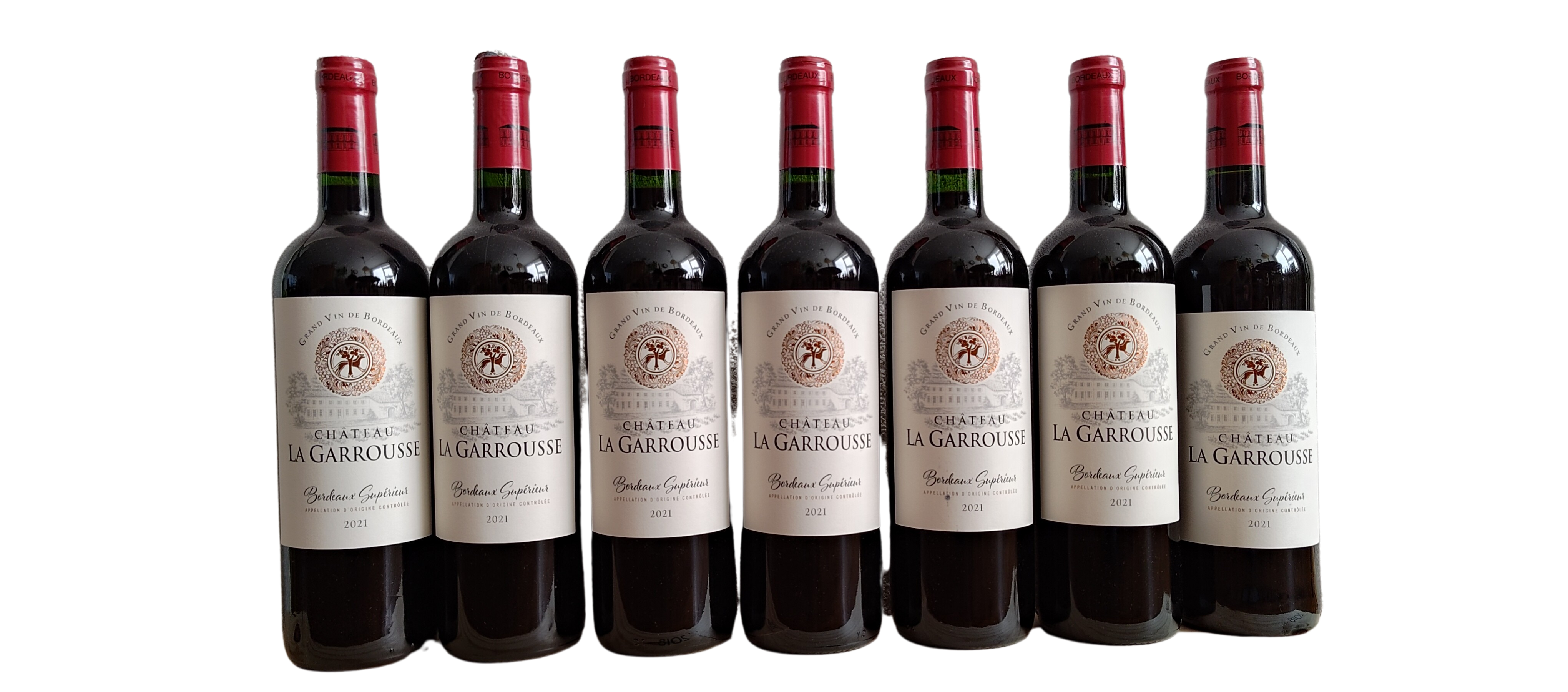
Appellation d’Origine Contrôlée (AOC):
- Meaning: “Controlled Designation of Origin.”
- Characteristics: Wines from specific, smaller geographical areas with defined grape varieties, production methods, and quality standards.
- Label: Includes the specific appellation and may include the grape variety and vintage.
- Examples: Bordeaux AOC, Burgundy AOC, Champagne AOC.
Appellation d’Origine Protégée (AOP):
- Meaning: “Protected Designation of Origin.”
- Characteristics: Essentially the same as AOC, this designation is used to align with European Union regulations.
- Label: Includes the specific appellation, grape variety, and vintage, with strict adherence to traditional methods and standards.
- Examples: Alsace AOP, Châteauneuf-du-Pape AOP.
Additional Labels and Terms
Cru: Indicates a vineyard or group of vineyards with recognized quality. Often seen in Bordeaux (Grand Cru, Premier Cru) and Burgundy (Grand Cru, Premier Cru).
Grand Cru: Refers to the highest quality vineyard or wine from a specific region.
Premier Cru: Denotes a wine or vineyard of slightly lesser quality than Grand Cru but still of high quality.
Village: Indicates a wine from a specific village, particularly in Burgundy, known for producing high-quality wines.
Côte: Refers to wines from hillside vineyards, such as Côte d’Or in Burgundy.
France is home to some of the world’s most famous wine regions, each known for its unique terroir and exceptional wines.
1. Bordeaux
Located in Southwestern France, Bordeaux is known for producing some of the world’s finest red wines. It is divided into two main regions, the Left Bank and the Right Bank, each with distinct wine styles. The region’s prestigious appellations include Médoc, Saint-Émilion, and Pomerol.
2. Burgundy (Bourgogne)
Located in Eastern France, Burgundy is famous for its complex and elegant Pinot Noir and Chardonnay wines. It is home to renowned sub-regions like Côte de Nuits, Côte de Beaune, and Chablis. The region’s classification system includes Grand Cru and Premier Cru vineyards.
3. Champagne
Located in Northeastern France, it is the only region where true Champagne can be produced. This area is celebrated for its sparkling wines made primarily from Chardonnay, Pinot Noir, and Pinot Meunier grapes. Notable areas include Reims and Épernay.
4. Loire Valley
Located in Central France, along the Loire River, the Loire Valley is known for its diverse wine styles. It produces excellent Sauvignon Blanc, Chenin Blanc, and Cabernet Franc wines. Key appellations include Sancerre, Pouilly-Fumé, and Vouvray.
5. Rhône Valley
Located in Southeastern France, it is divided into Northern and Southern Rhône, this region is famous for robust red wines like Syrah (in the north) and Grenache-based blends (in the south). Renowned appellations include Côte-Rôtie, Hermitage, and Châteauneuf-du-Pape.
6. Alsace
Located in Northeastern France, near the German border, Alsace is known for its aromatic white wines, particularly Riesling, Gewürztraminer, and Pinot Gris. The region’s unique wines often exhibit a balance of richness and acidity.

7. Provence
Located in Southeastern France, along the Mediterranean coast, Provence is renowned for its rosé wines. The region also produces red and white wines. Provence’s sunny climate and picturesque vineyards contribute to the popularity of appellations like Côtes de Provence and Bandol.
8. Languedoc-Roussillon
Located in Southern France, along the Mediterranean coast, Languedoc-Roussillon is one of France’s largest wine-producing areas. It is known for a wide variety of wines, from robust reds to crisp whites and rosés. Notable appellations include Corbières and Minervois.
9. Beaujolais
Located just south of Burgundy, Beaujolais is famous for its light and fruity red wines made from the Gamay grape. It is best known for the Beaujolais Nouveau, a young wine released shortly after harvest. Key appellations include Beaujolais Villages and Moulin-à-Vent.
These regions each contribute to France’s reputation as a leading wine-producing country, offering a diverse range of wines that reflect their unique climates, soils, and winemaking traditions.
1. Rioja
Located in Northern Spain, along the Ebro River, Rioja is arguably Spain’s most famous wine region, known for its excellent red wines made primarily from Tempranillo grapes. The region is divided into three subregions: Rioja Alta, Rioja Alavesa, and Rioja Oriental, each contributing to the complexity and character of Rioja wines. These wines often exhibit rich fruit flavors, balanced acidity, and subtle oak influences.
2. Ribera del Duero
Located in Northern Spain, along the Duero River, Ribera del Duero is celebrated for its powerful and full-bodied red wines, predominantly made from Tempranillo (locally known as Tinto Fino or Tinta del País). The region’s high altitude and extreme temperature variations contribute to the depth and intensity of its wines, often characterized by dark fruit flavors and robust tannins.
3. Priorat
Located in Northeastern Spain, in Catalonia, Priorat is known for its bold and complex red wines, primarily made from Garnacha (Grenache) and Cariñena (Carignan) grapes. The region’s unique llicorella (slate) soils and steep vineyards produce wines with concentrated flavors, high minerality, and a distinctive character.
4. Rías Baixas
Located in Northwestern Spain, in Galicia, Rías Baixas is renowned for its crisp and aromatic white wines made from the Albariño grape. The cool, coastal climate and granite soils contribute to the fresh acidity and vibrant fruit flavors of these wines, making them perfect for seafood pairings.
5. Cava (Penedès)
Located in Northeastern Spain, in Catalonia, Penedès is the heartland of Cava, Spain’s famous sparkling wine. Made using the traditional method, Cava is produced from indigenous grape varieties such as Macabeo, Xarel·lo, and Parellada. These sparkling wines are known for their elegance, fine bubbles, and notes of citrus and green apple.
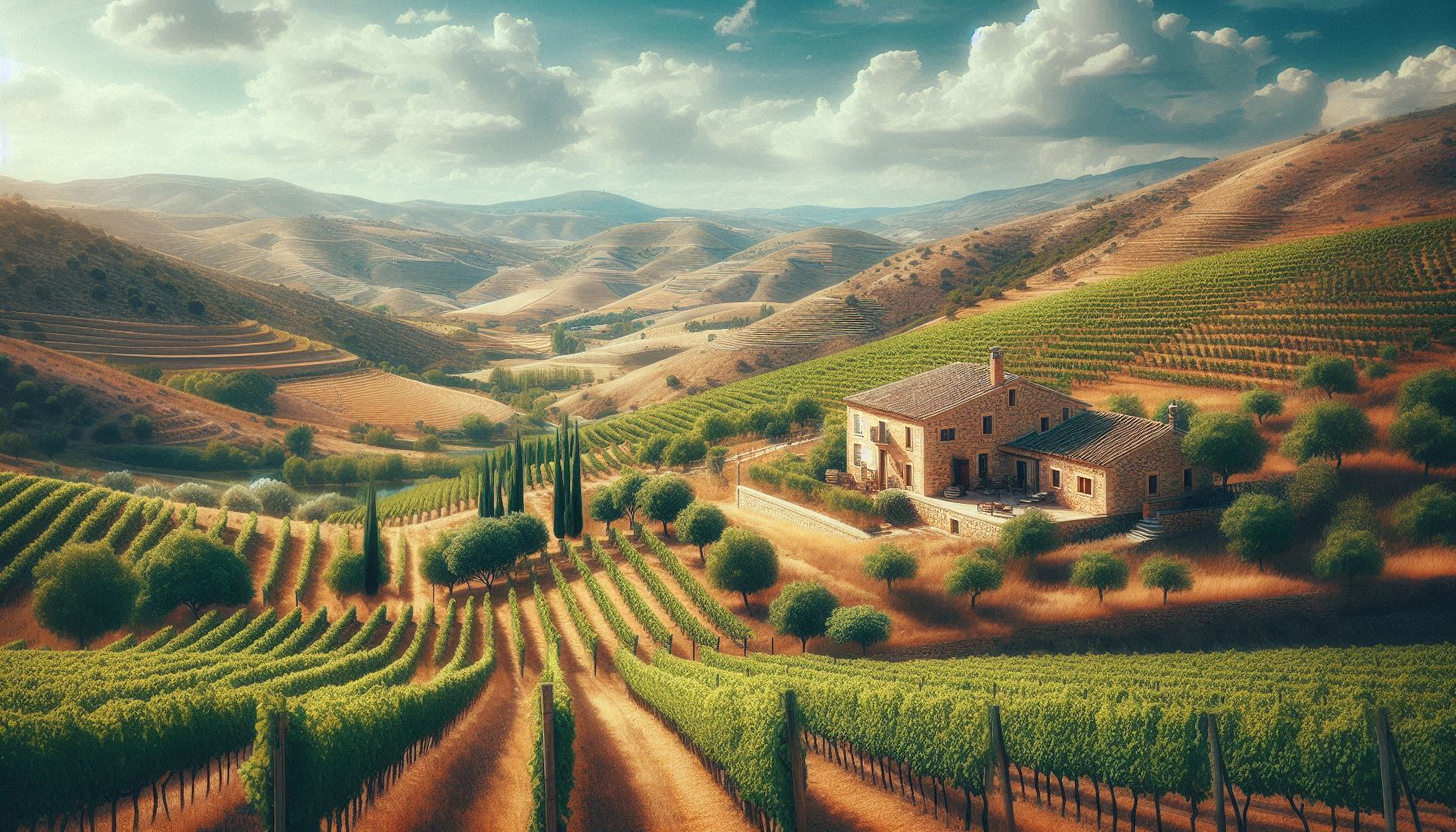
6. Sherry (Jerez)
Located in Southern Spain, in Andalusia, Jerez is the home of Sherry, a fortified wine made from Palomino, Pedro Ximénez, and Moscatel grapes. Sherry comes in a variety of styles, from dry Fino and Manzanilla to rich and sweet Pedro Ximénez. The unique solera aging system and the influence of the region’s climate and soils give Sherry its distinctive character.
7. Toro
Located in Northwestern Spain, in Castilla y León, Toro is known for its robust and intense red wines made primarily from Tinta de Toro, a local clone of Tempranillo. The region’s hot climate and old vines produce wines with deep color, high alcohol content, and rich, ripe fruit flavors.
8. Rueda
Located in Northwestern Spain, in Castilla y León, Rueda is famous for its fresh and aromatic white wines made from the Verdejo grape. The region’s continental climate and high altitude contribute to the crisp acidity and vibrant citrus and tropical fruit flavors of its wines.
These regions showcase the diversity and quality of Spanish wines, each offering unique expressions of their local terroir and winemaking traditions.
Italy is renowned for its diverse and rich wine regions, each offering unique styles and flavors. Here are some of the most famous wine regions in Italy.
1. Tuscany (Toscana):
Tuscany is one of Italy’s most famous wine regions, known for producing high-quality red wines. The region is particularly renowned for its Chianti, Brunello di Montalcino, and Vino Nobile di Montepulciano wines, made primarily from the Sangiovese grape. These wines are known for their elegance, complexity, and aging potential.
2. Piedmont (Piemonte)
Located in Northwestern Italy, Piedmont is famous for its powerful and age-worthy red wines, particularly Barolo and Barbaresco, made from the Nebbiolo grape. The region also produces excellent Barbera and Dolcetto wines, as well as the sparkling wine Asti Spumante and the white wine Gavi.
3. Veneto
Veneto, in Northeastern Italy, is known for its diverse range of wines. The region produces the renowned Prosecco, a popular sparkling wine, as well as Amarone della Valpolicella, a rich and complex red wine made using partially dried grapes. Soave, a crisp and refreshing white wine, is also produced here.
4. Sicily (Sicilia)
Sicily, the largest island in the Mediterranean, is known for its vibrant and diverse wine production. The region is famous for its robust red wines made from Nero d’Avola and Nerello Mascalese grapes, as well as the fortified wine Marsala. Sicily’s white wines, such as those made from the Grillo and Carricante grapes, are also highly regarded.
5. Friuli-Venezia Giulia
Located in Northeastern Italy, Friuli-Venezia Giulia is renowned for its high-quality white wines. The region produces excellent Pinot Grigio, Friulano, and Sauvignon Blanc wines. Its red wines, such as those made from the indigenous Refosco and international Merlot and Cabernet Sauvignon grapes, are also notable.
6. Emilia-Romagna
Emilia-Romagna, in Northern Italy, is known for its sparkling red wine, Lambrusco, which can range from sweet to dry. The region also produces Sangiovese di Romagna, a red wine similar to its Tuscan counterpart, and the white wine Albana di Romagna.
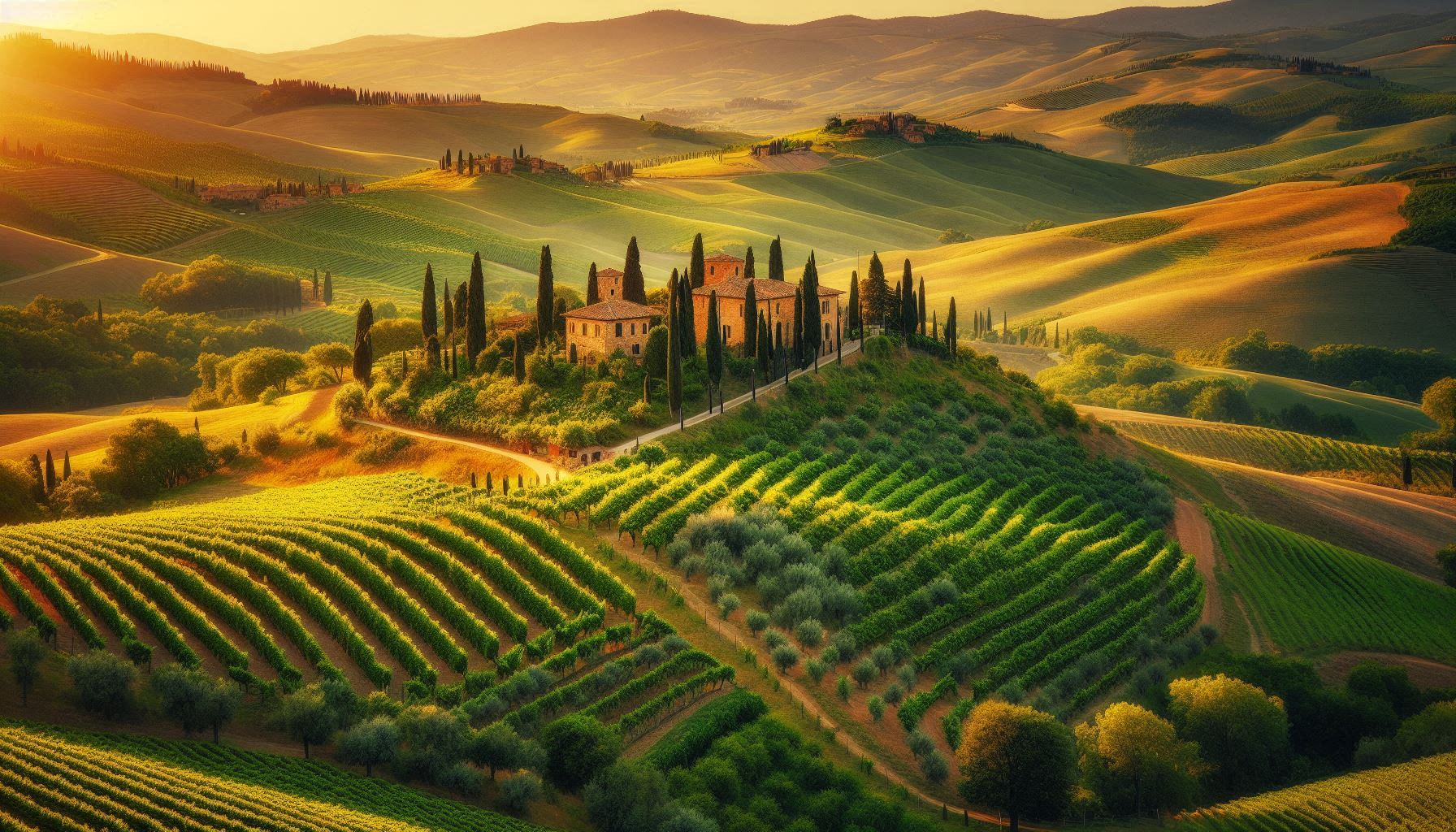
7. Campania
Located in Southern Italy, Campania is known for its ancient wine traditions and unique grape varieties. The region’s most famous wines include the white wines Fiano di Avellino and Greco di Tufo, and the robust red wine Taurasi, made from the Aglianico grape.
8. Puglia (Apulia)
Puglia, located in the heel of Italy’s boot, is known for its robust and fruity red wines made from indigenous grape varieties such as Primitivo (known as Zinfandel in the US) and Negroamaro. The region also produces rosé and white wines.
9. Umbria
Situated in Central Italy, Umbria is known for its Sagrantino di Montefalco, a robust red wine with high tannins and aging potential. The region also produces Orvieto, a popular white wine blend made primarily from Grechetto and Trebbiano grapes.
10. Trentino-Alto Adige
Located in Northern Italy, Trentino-Alto Adige is known for its high-quality white wines, including Pinot Grigio, Gewürztraminer, and Chardonnay. The region also produces excellent red wines from the Lagrein and Teroldego grapes.
Learn the best wine from Europe
Bordeaux, France: Château Margaux (Red Wine)
Burgundy, France: Domaine de la Romanée-Conti (Red Wine)
Tuscany, Italy: Sassicaia (Red Wine)
Piedmont, Italy: Barolo (Red Wine)
Rioja, Spain: Vega Sicilia Único (Red Wine)
Champagne, France: Dom Pérignon (Sparkling Wine)
Germany: Joh. Jos. Prüm Riesling (White Wine)

Simple suggestions for buying the right bottle of wine
Buying the right bottle of wine can be a daunting task, especially for those who are not experts. However, it is not too difficult to buy a satisfactory bottle of wine for those who are less experienced.
Remember that wine tasting is a subjective experience, and what matters most is finding wines that you personally enjoy. With a little exploration and experimentation, you’ll soon become more confident in selecting the right bottle of wine for any occasion.
Reading a wine label
Reading a wine label can provide you with valuable information about the wine, including its origin, grape variety, vintage, and sometimes details about the winemaking process.
Keep in mind that wine label regulations can vary by country, so the information presented on labels may differ. Additionally, some labels may be more traditional and provide less detailed information, while others may include extensive details about the winemaking process. It’s a good idea to familiarize yourself with the specific labeling conventions of the region where the wine was produced.
Wine knowledge
Wine is a complex beverage produced from grape juice. Wine is said to be essentially a healthy beverage when consumed within reason and an important supplement in food and energy to the body.
Wine words you need to know
Certainly! When delving into the world of wine, there are several terms and concepts that can enhance your understanding and appreciation. Understanding these terms will enrich your wine appreciation journey and help you communicate more confidently about different aspects of the world of wine. Cheers! 🍷
Tannins, acidity, body, oak aging, vintage, terroir, aroma vs. bouquet, sommelier, appellation, blend, decanting, …
EU Winery
Vlielandlaan 12, 6922 EG, Duiven, Gelderland, the Netherlands
Email: [email protected]
Tel.: +31 649 675 678
EU Winery Viet Nam
No. 6, Group 1, Tan Lap ward, Thai Nguyen city, Viet Nam
Email: [email protected]
Tel.: +84 83 666 8886
EU Winery Viet Nam Wine Store
No. 166 Minh Cau street, Group 10, Phan Dinh Phung ward,
Thai Nguyen city, Viet Nam
Hotline: +84 83 666 8886
